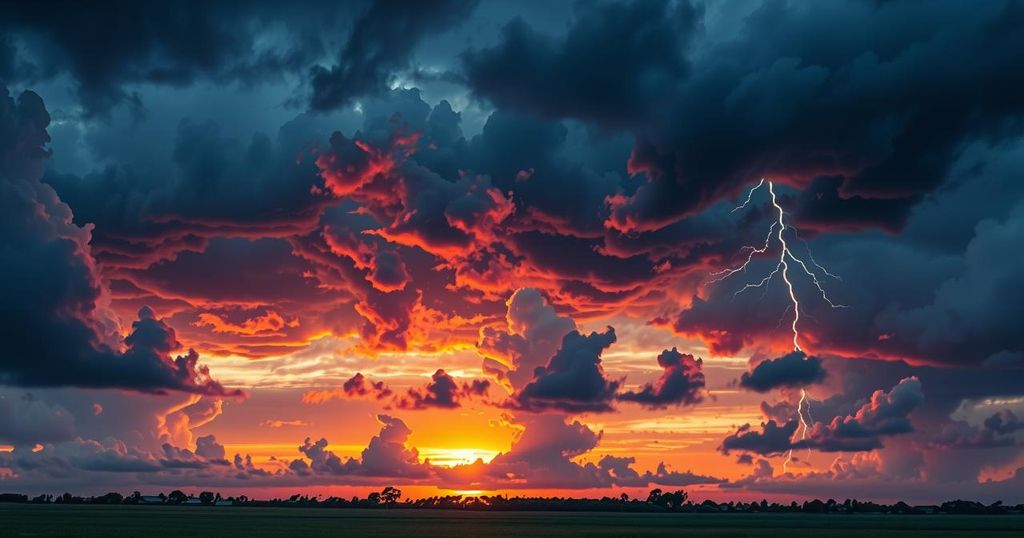Severe Weather Catastrophes Claim Lives and Devastate U.S. Communities

A catastrophic weekend of severe weather has resulted in at least 39 fatalities across multiple U.S. states. Tornadoes, dust storms, and wildfires wreaked havoc, particularly in the South-Central region. Recovery efforts are underway as officials gather resources to assist affected individuals and communities, while meteorological predictions suggest more weather threats ahead.
Severe weather has drastically impacted multiple states in the U.S., leading to the loss of at least 39 lives. The destruction was caused by a combination of violent tornadoes, dust storms, and wildfires, which swept across the central and eastern regions of the country. As the storm moved eastward on March 16, 2025, communities began evaluating the extensive damage inflicted upon homes and infrastructure.
As of Sunday afternoon, the impact was tragically profound, with local officials reporting that at least 37 fatalities had occurred, primarily in the South-Central U.S. The storms initiated intense weather concerns culminating in tornado activity, dust storms, and wildfires that devastated entire neighborhoods. Amid recovering efforts, individuals like Trey Bridges and Donna Blansett faced the emotional toll of sifting through the ruins of their properties.
On that day, victims recounted harrowing experiences as they sought shelter from the tornadoes. For instance, Steve Romero and his fiancé, Hailey Hart, described seeking refuge in their car when a tornado struck. Their ordeal, along with others, illuminated the extraordinary threat that the storm posed, prompting emergency interventions.
The National Weather Service reported a record of significant meteorological phenomena, including 46 tornadoes on Friday and 41 on Saturday. Fortunately, Sunday saw no new tornado reports, although wind damage continued to affect areas, including West Virginia and New York. Communities, including Tylertown in Mississippi, faced chaotic destruction, leading to substantial displacement of residents.
The impact of wind-driven wildfires exacerbated the situation in Oklahoma and Texas, with officials warning of impending fire risks. Reports indicated over 130 fires in Oklahoma alone, significantly affecting hundreds of homes. Local leaders emphasized the overwhelming conditions firefighters faced when battling flames driven by winds exceeding 70 mph.
Additionally, dust storms contributed to catastrophic roadway incidents, with at least eight individuals perishing in a multi-vehicle pileup in Kansas. Similar accidents in Texas resulted in multiple fatalities as visibility drastically dropped due to the wind. Efforts to recover from these disasters have mobilized local and national resources.
Federal support was pledged by President Trump, who indicated that the White House would assist communities as they navigated recovery efforts. National Guard troops were dispatched to areas such as Arkansas, which faced confirmation of tragic losses. Emergency management officials emphasized the need for ongoing support as communities reshaped plans for resilience in the wake of nature’s fury.
In summary, the recent severe weather across the United States has led to significant loss of life and widespread destruction, characterized by tornadoes, dust storms, and wildfires. Hundreds of homes have been damaged or destroyed across multiple states, particularly in the South-Central region. Recovery efforts are ongoing, with both local and federal assistance being mobilized to help affected communities rebuild. The events underscore the importance of preparedness in light of increasingly volatile weather patterns during spring.
Original Source: apnews.com





